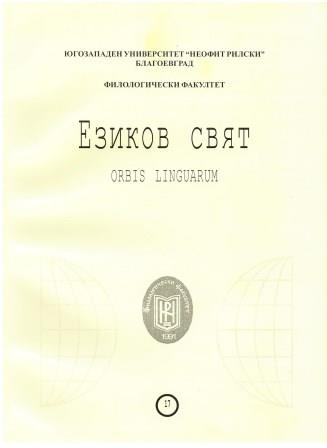„ПЪТЯТ НА КОПРИНАТА“, ЕВРАЗИЙСКИЯТ ПРОЕКТ И „ГОЛЯМА ЕВРАЗИЯ“ (ГЕОПОЛИТИЧЕСКИ ПРОЧИТ)
„THE SILK ROAD“, ТHE EURASIAN PROJECT AND „GREAT EURASIA“ (GEOPOLITICAL READING)
Author(s): Boris ManovSubject(s): Politics / Political Sciences, Geopolitics
Published by: ЮГОЗАПАДЕН УНИВЕРСИТЕТ »НЕОФИТ РИЛСКИ«
Keywords: Geopolitics; Тhe Silk Road; „The Belt and Road Initiative“; „Great Eurasia“
Summary/Abstract: The research is carried out through the prism of geopolitics and reveals the "logic" and the essence of „The Belt and Road Initiative“. It outlines its basic ideas and goals. The study justifies and proves the (hypo)thesis that despite the apparent "leadership" of the economic events, the political and geopolitical aspects (vectors) of the project are linked to the economy. The economy does not function on its own way, but is formulated, supported by policy and used for political purposes, i.e., the project in its deep essence is political. The political nature of „The Belt and Road Initiative“ is expressed in the following: it is an attempt to find in internal policy a mechanism to preserve the political power of the Communist Party and to continue the existence of the dominant political system - the totalitarian (one-party) political system in the PRC. The geopolitical task is to find the „place“ of modern China in the global world. The goal is to restore the central ("middle") location of China in the 21st century world. „The Silk Road“ is one of the directions for its realization and the means for its achievement are complex - the „most obvious“ are theactions in the economic sphere, but equally important are the military, diplomatic, cultural factors and impacts. In conclusion, it is argued that „The Belt and Road Initiative“ will be realized as an optimal, reasonable balance between the „desired“ and the „possible“ and will be specified in the adoption of the formula „Great Eurasia“, i.e., in the transformation of China into a regional (regional-global, global-regional) center, the „middle empire“ of the Eurasian supercontinent, the largest and most powerful geopolitical and geo-economic power center in the future „multipolar“ or more likely „bipolar“ („West-Sea“ - „East-Еarth“) world from the middle and the end of the 21st century.
Journal: Езиков свят - Orbis Linguarum
- Issue Year: 17/2019
- Issue No: 2
- Page Range: 170-181
- Page Count: 12
- Language: Bulgarian

